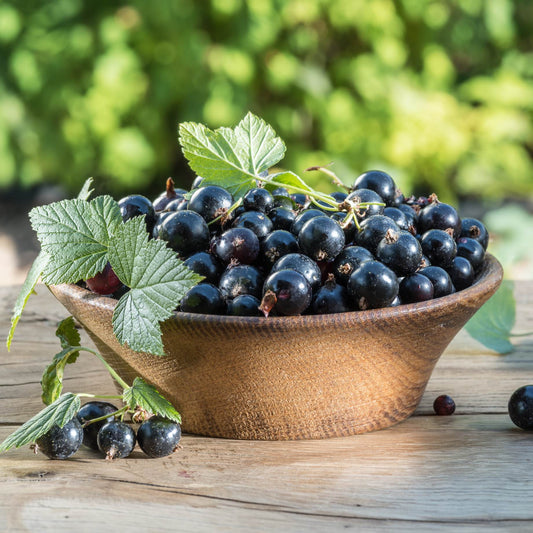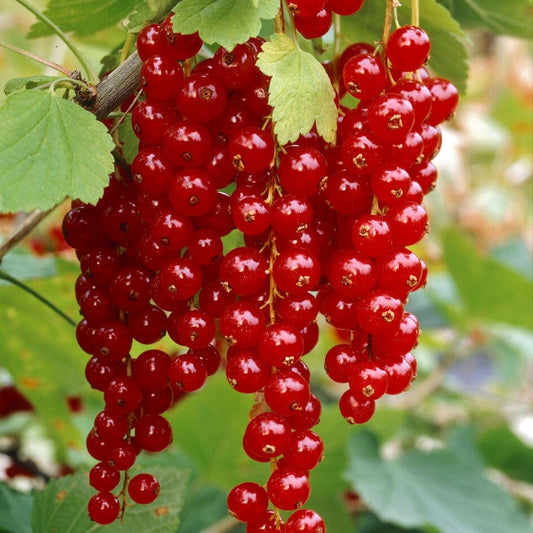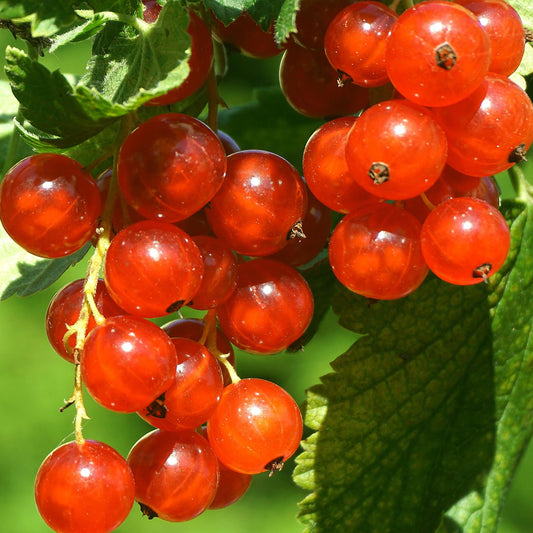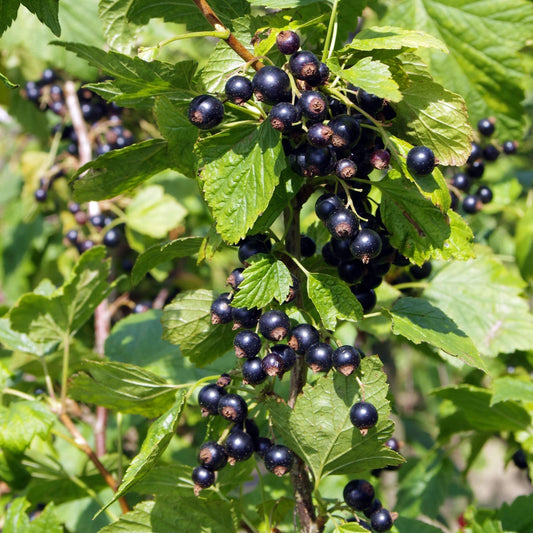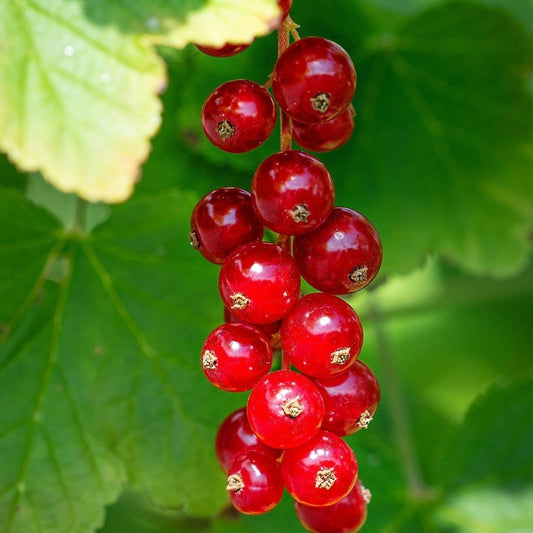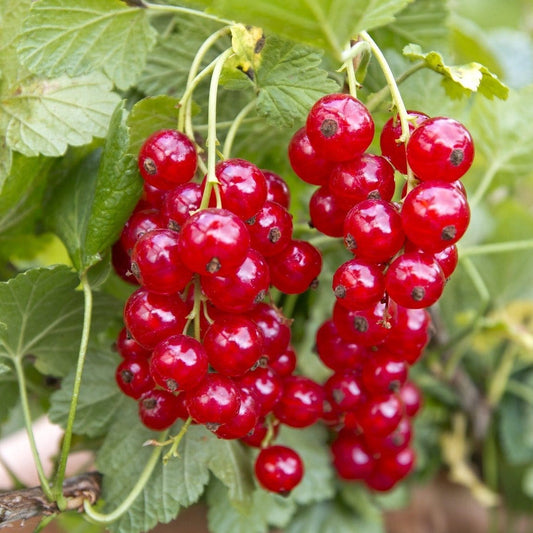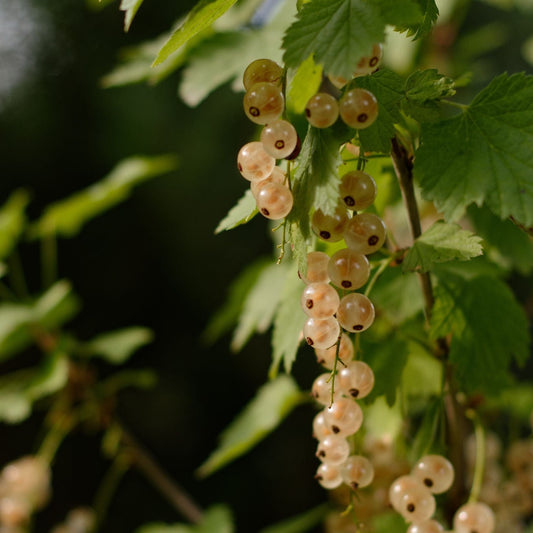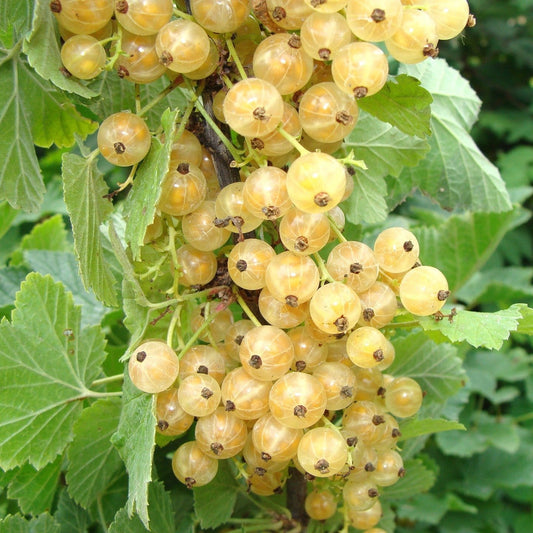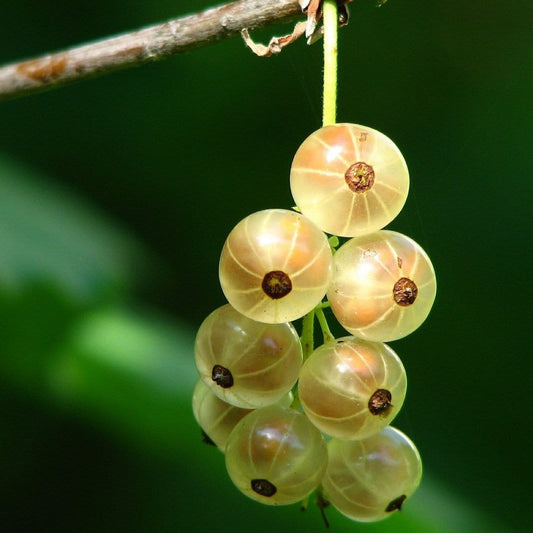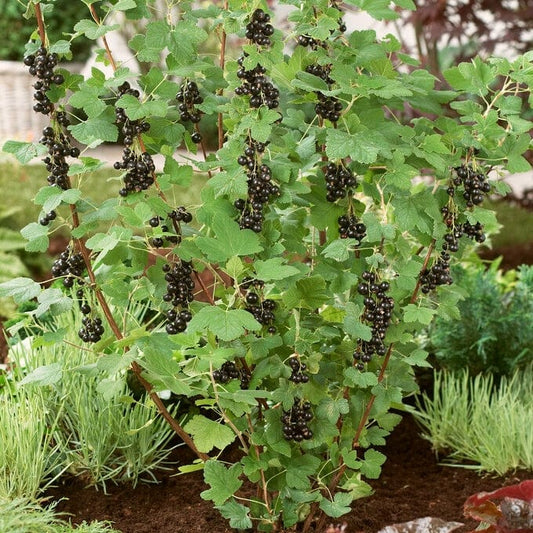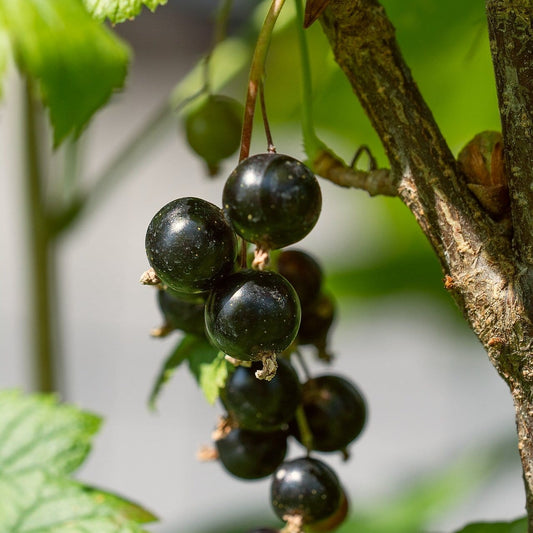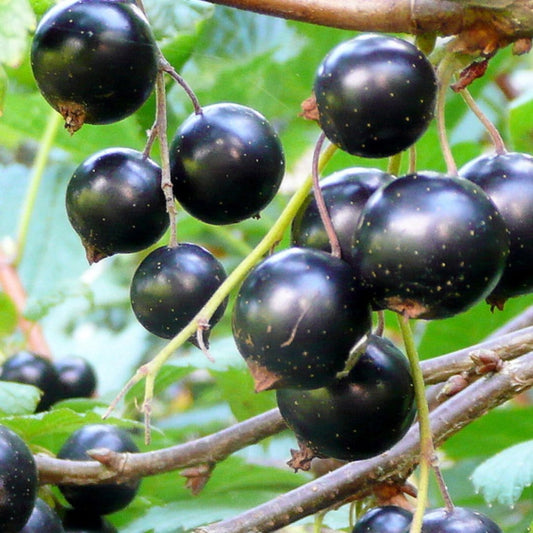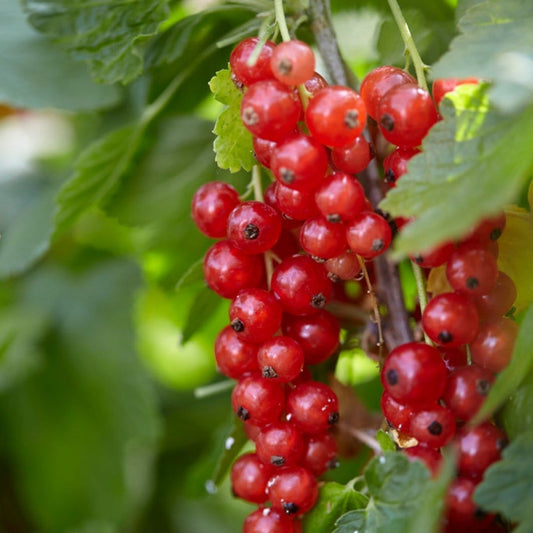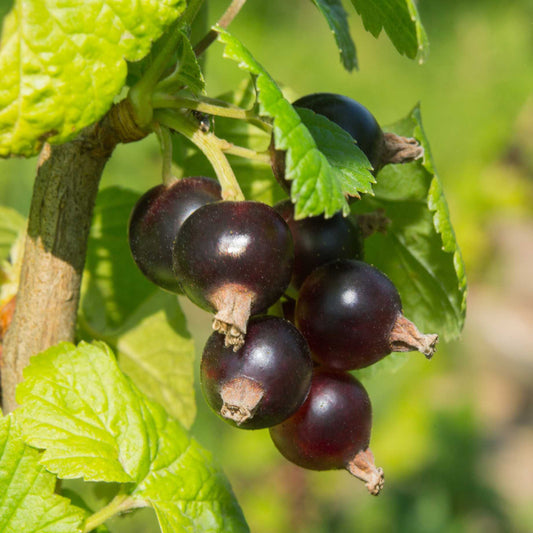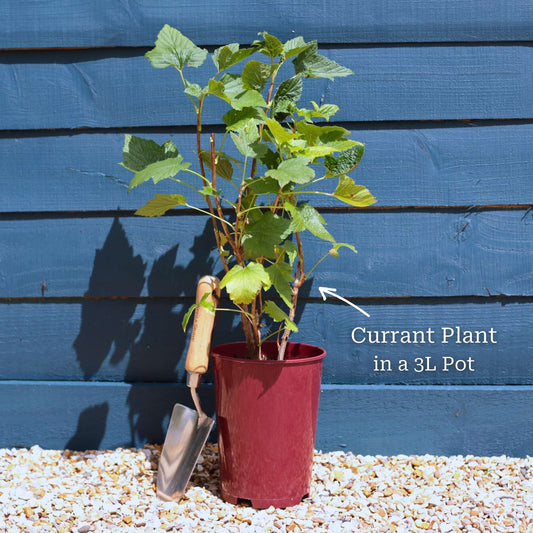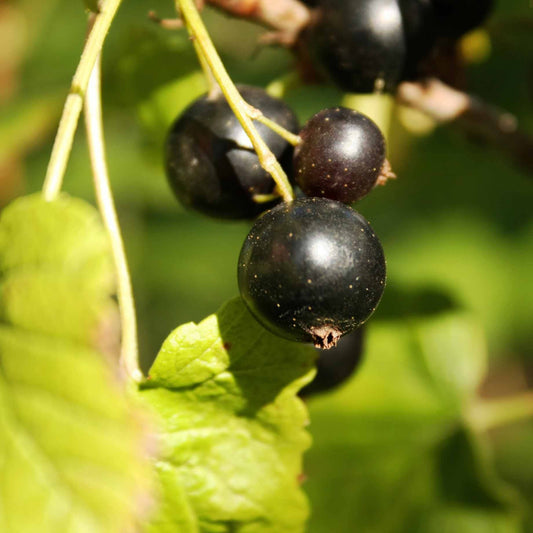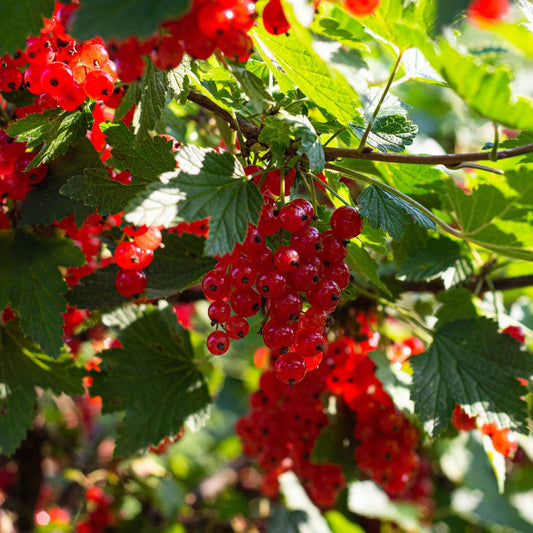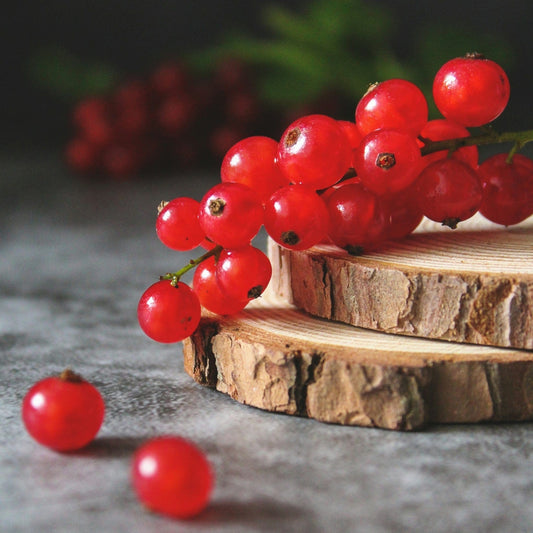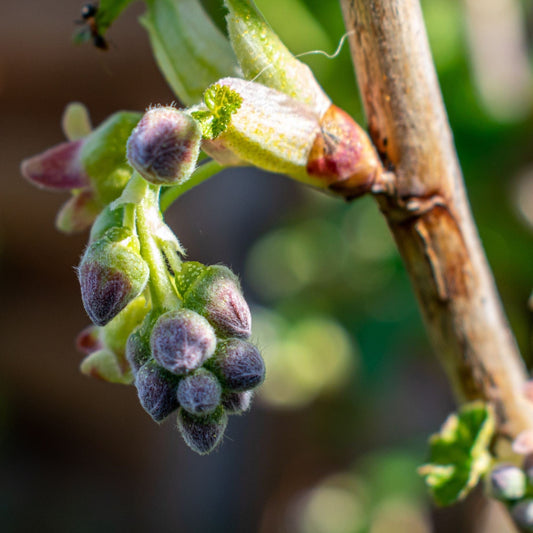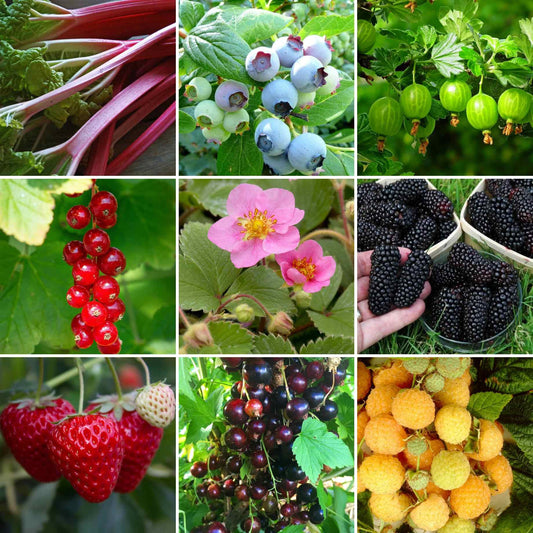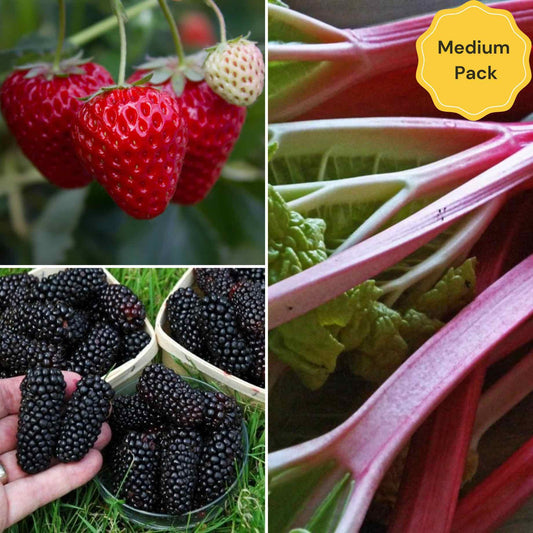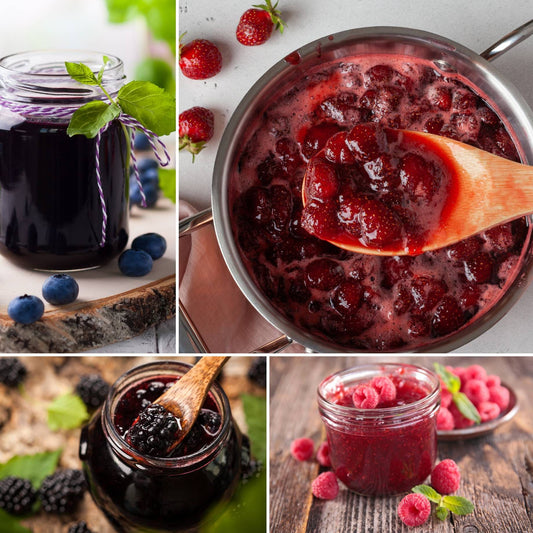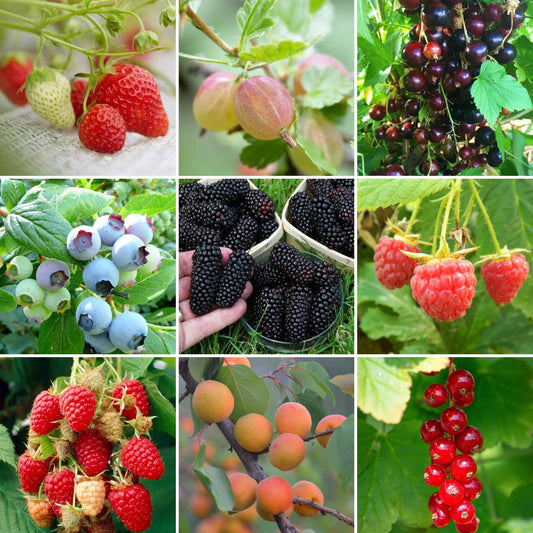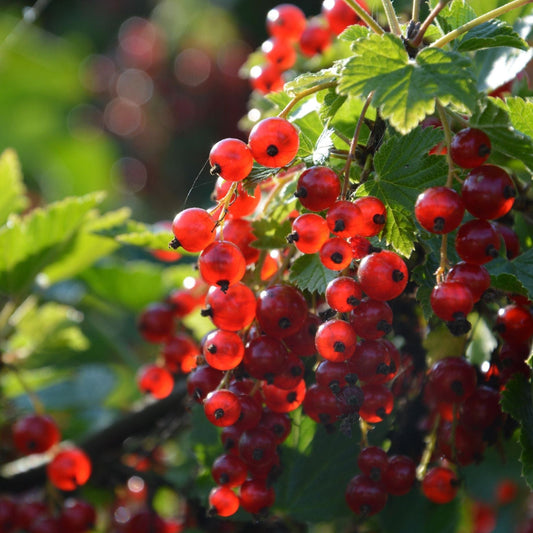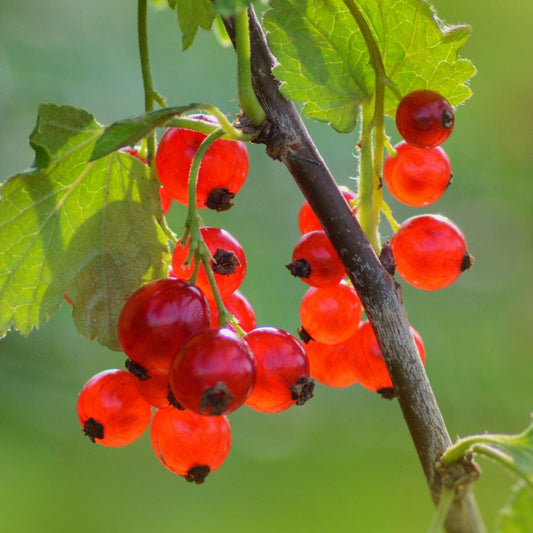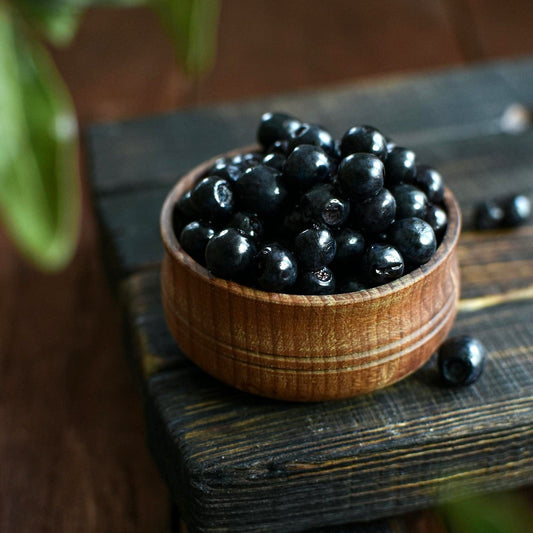Collection: Redcurrant and Blackcurrant Bushes
Growing currants is easy and produces large crops of delicious berries packed with nutrients, as well as attracting pollinators to your garden. Our blackcurrants are Scottish bred varieties grown outdoors so they’re used to inclement weather and are guaranteed to grow strong and healthy in any area of the UK. Currants are best eaten fresh and are rarely found in the shops, so the best way of getting your supply of this very British superfood is to grow your own!
Need help picking?-
Regular price From £11Regular price
£15Sale price From £11'Big Ben' Blackcurrant Bush
Huuuuuuuuge blackcurrants
- Big fruits that don't compromise on flavour
- Highly disease-resistant
- Give homemade blackcurrant vodka a go!
- Harvest from July to August
2 options available
-
Regular price From £11Regular price
£13Sale price From £11'Rovada' Redcurrant Bush
Mouthwateringly good currants
- Superb flavour, both sweet and sour
- RHS Award of Garden Merit winner
- Perfect for pies, tarts and jelly
- Pick your redcurrants from mid-July
1 option available
-
Regular price From £11Regular price
£14Sale price From £11'Ben Connan' Blackcurrant Bush
An award-winning favourite
- Boasts a superb rich flavour
- Well-suited to the UK climate
- Prep a blackcurrant sauce to serve with duck
- Harvest from July
1 option available
-
Regular price From £11Regular price
£13Sale price From £11'Jonkheer van Tets' Redcurrant Plant
Dutch deliciousness
- Beautifully sweet with great juiciness
- RHS Award of Garden Merit winner
- Makes a cracking jam
- Ready to pick from early July
3 options available
-
Regular price From £11Regular price
£13Sale price From £11'Gloire de Sablons' Pink Currant Plant
Try finding these in the shops!
- Bursting with aromatic sweetness
- Nice and easy to care for
- Perfect for summer puddings
- Pick your currants from July
3 options available
-
Regular price From £9Regular price
£19Sale price From £9'White Versailles' Whitecurrant Plant
Stunning, translucent currants
- Sweeter tasting than redcurrants!
- Ideal for pots and gardens with limited space
- Bake a fabulous whitecurrant tart
- Pick your currants in July and August
2 options available
-
Regular price From £11Regular price
£13Sale price From £11'Ben Sarek' Blackcurrant Bush
Compact? Tick. Big yields? Tick!
- Decadent, juicy and brimming with flavour
- Up to 30% more fruit than other varieties
- Try out a blackcurrant swiss roll!
- Harvest your blackcurrants from mid-July
3 options available
-
Regular price From £12Regular price
£16Sale price From £12'Ben Lomond' Blackcurrant Bush
Bonny wee blackcurrants
- An ideal balance of sweet and tart
- Showcases brilliant disease resistance
- Use in a delicious blackcurrant cheesecake
- Pick your blackcurrants from July to August
2 options available
-
Regular price From £9Regular price Sale price From £9
'Red Lake' Redcurrant Bush
Dazzling red spheres of flavour
- Sumptuously juicy and flavourful
- RHS Award of Garden Merit winner
- Make a jelly and add to venison stew
- Harvest your redcurrants in July
4 options available
-
Regular price £12Regular price
£15Sale price £12'Ben Alder' Blackcurrant Bush
Blackberry wine? Yes, please!
- Intense flavour and juiciness
- A highly-productive variety
- Use the juice for wine or bake in a tart
- Harvest from July to August
1 option available
-
Regular price From £11Regular price
£19Sale price From £11'Ben Hope' Blackcurrant Bush
The nation's favourite
- Bold, punchy blackcurrant flavour
- Great resistance to gall mite
- Make your own cordial or eat fresh
- Harvest from July to August
1 option available
-
Regular price From £6Regular price
£13Sale price From £6'Laxton's Number One' Redcurrant Plant
Numero uno for good reason
- Big flavours come in small packages...
- Heavy-cropping variety
- Reduce with raspberries to make a coulis
- Pick your redcurrants in July and August
2 options available
-
Regular price From £6Regular price
£12Sale price From £6'Titania' Blackcurrant Bush
Queen of the currants
- Rich, juicy and wonderfully tangy
- RHS Plants for Pollinators
- Use in smoothies and sumptously sticky jams
- Harvest from July
3 options available
-
Regular price From £39Regular price
£41Sale price From £39Fruit Plants for Beginners | Allotment in a Box
Pick your own soft fruit and grow it too
- Juicy berries, currants and more
- Top-performing, premium varieties
- Eat fresh or make unbeatable crumbles
- Harvest from summer onwards
3 options available
-
Regular price From £39Regular price
£41Sale price From £39Jam Maker's Fruit Plants Collection | Allotment in a Box
If fruit is your jam, grow your own!
- Rich and flavourful varieties
- Includes premium berries, currants & apricots
- Best fruits for jams, jellies and desserts
- Harvest from summer onwards
3 options available
-
Regular price £18Regular price Sale price £18
'Rolan' Redcurrant Bush
Jazz up your jams
- The perfect combo of sweet and tart
- Yields worth shouting about
- Make a jelly your roast will be proud of
- Harvest in July
Currently out of stock
-
Regular price £12Regular price Sale price £12
'Redstart' Redcurrant Plant
"Reddy" for fantastic flavour?
- Sweet and subtly tangy
- Reliably heavy cropper
- Brilliant with roast lamb
- Harvest your redcurrants in August
Currently out of stock
-
Regular price £13Regular price Sale price £13
'Baldwin' Blackcurrant Plant
Old but gold (well, dark purple)
- Wonderful subtlety of flavour
- Incredibly easy to grow
- Make your own sticky blackcurrant jam
- Pick your fruits from July
Currently out of stock
-
Regular price £12Regular price Sale price £12
'Ben Nevis' Blackcurrant Bush
Laughs in the face of frost
- A marriage of sweet and tart flavours
- Brilliant juice content
- Makes fabulous jams, jellies and coulis
- Pick throughout July
Currently out of stock
Roots' Cotswolds Valley Nursery
Meet Mike
Fruit plants grown with love (and serious knowhow!)
Mike’s our guy when it comes to growing soft fruits. He’s our grape guru. Our gooseberry genius. Our blueberry boffin. What Mike doesn’t know about soft fruits? Well, it simply isn’t worth knowing. Having traversed the world from Australia to Northern Ireland – and even undertaking a horticultural stint in Sweden – Mike combines his enthusiasm, technical expertise, state-of-the-art facilities and favourable climatic conditions of the Cotswolds to grow only the very juiciest, sweetest soft fruits.
Need help picking?

Which currant is best for you?
Choose Ben Lomond, Ben Connan or Big Ben blackcurrants for perfect pies and jams - they’re all frost resistant too. Redcurrants can be eaten raw and will thrive even in North facing gardens - both Rovada and Red Lake are high cropping varieties. If your plot is a little shadier, choose pink or white currants - they don’t need as much sun as the others and these translucent little gems look as lovely as they taste.

Growers' tips
Currant plants are largely trouble-free and will reward you with large crops. Feed them with a high potash fertiliser in the growing season and be sure to harvest them on a dry day. Remove any weeds around your plants by hand, as the roots are easily damaged. Blackcurrants need full sun, so position your plants in a warm, sheltered spot. They all do best when planted in the ground - make sure the soil is well drained and kept moist. Red and white currants can cope with colder conditions, thrive in pots and can be trained.

Using your currants
Currants are often seen garnishing delicious desserts in restaurants, but they’re much more than a pretty berry. Make yours into a pie with chunks of caramelised bramley apple or try your hand at a cordial, jelly or jam. They make a juicy addition to a summer pudding too, but be warned - once you try a sweet whitecurrant fresh from the garden, it’s hard to stop!
Currant FAQs
What types of currant plants can I grow in the UK?
All types of currants are easy to grow in the UK, including including blackcurrants, redcurrants, pinkcurrants and whitecurrants.
When is the best time to plant currant bushes?
Bare root currant plants need planting between November and March while they’re dormant, but potted currant plants can be planted at any time of year as long as the ground is workable and not waterlogged.
What kind of soil do currants prefer?
Plant your currants in well drained, fertile soil, preferably with a pH between 6.0 and 6.5, but they’ll be fine in most ordinary garden soils. They prefer a sunny location but are also productive in partial shade. They’ll do even better if you mix in plenty of compost or well rotted manure when planting.
How do I plant currant bushes?
To plant your currant bush, dig a hole large enough to contain the roots and position the plant in the centre, at the same depth it was growing in its pot. If you’re planting more than one, space them 1.5-2m apart to allow for spreading. Fill in the hole with soil, adding compost or manure, then firm in your plant gently and give it a good watering. For more planting tips, see our growers’ guide.
How often should I water currant plants?
Water your currant plant regularly, especially when the weather is hot or dry. Once a week is usually fine, to keep the soil consistently moist but not waterlogged, and you can ease off in autumn and winter, when the rain will be enough.
What kind of fertilisation do currants require?
For the best results, give your currants a feed with general purpose plant food in early spring, then lay down some mulch around the plant to help keep moisture and nutrients in the soil.
How do I prune currant bushes?
Blackcurrants should be pruned in late winter or early spring, removing any old, unproductive wood to encourage new growth. Red, white and pink currants should also be pruned in late winter or early spring, cutting back the new growth by about half to encourage a good, productive shape, and removing any dead wood.
When are currants ready to harvest?
Depending on which variety you have, your currants will be ready to harvest between midsummer and early autumn. Blackcurrants are ripe when the berries are fully black, and other currants when they’re firm and brightly coloured. Harvest your currants by cutting off the sprays, then picking off the individual currants once you get them indoors.
Can currants be grown in containers?
Currants grow really well in containers, although they may eventually grow too large for them. If this happens, you’ll have to repot to a larger container, replant in the ground or prune your plant to fit. Choose a pot with good drainage holes, that’s at least 45cm wide and deep. Container grown plants will need more regular watering and feeding than those in the ground.
Happy plants make happy customers
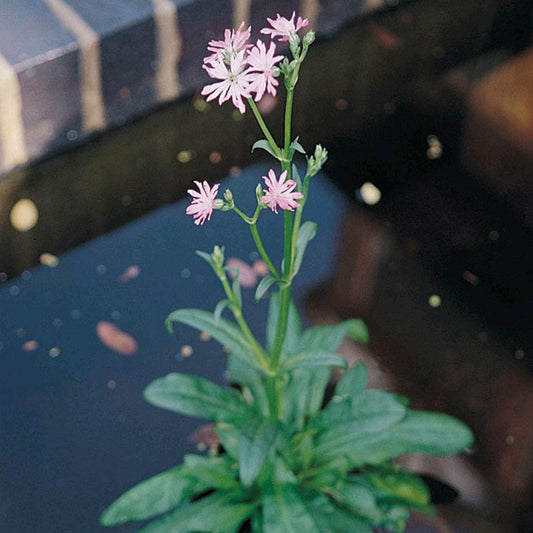
Plants arrived in great condition and very promptly. Well established - much better than the ones I got at my local garden centre.
Monica Spence
| 24 May
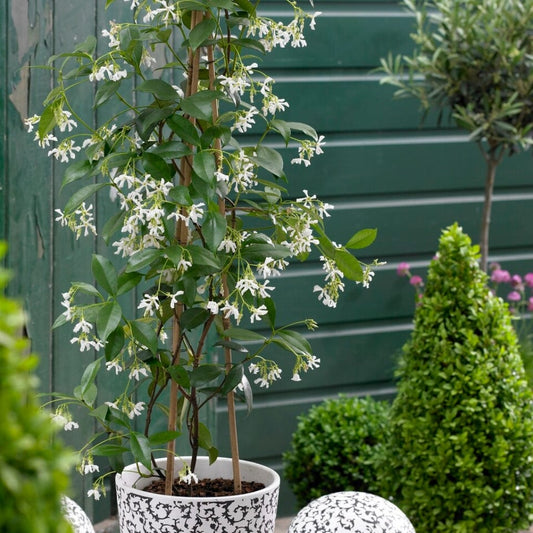
Yet again this company delivered good healthy plants, exactly as shown in photos, well packaged and within delivery time quoted. Recommend!
Jacqueline Burgess
| 2 Jun
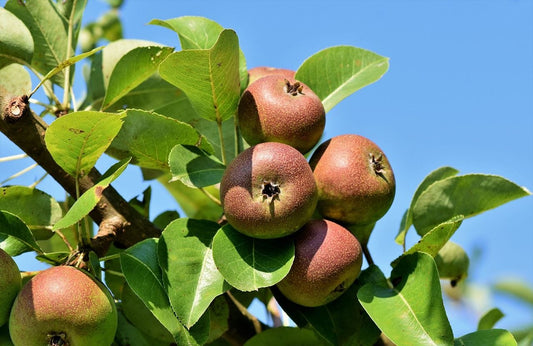
I continue to be so impressed with Roots. Their customer care, knowledge of their subject: from planting hedges to pruning roses and more, has been a great support.
Judy Lane
| 23 Oct
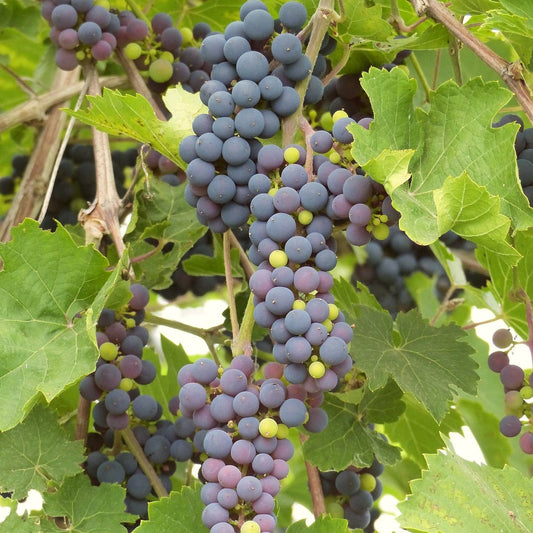
The plant arrived looking vigorously healthy, which brings a smile to your face, extremely well protected in its packaging.
Martyn Hill
| 5 Jul
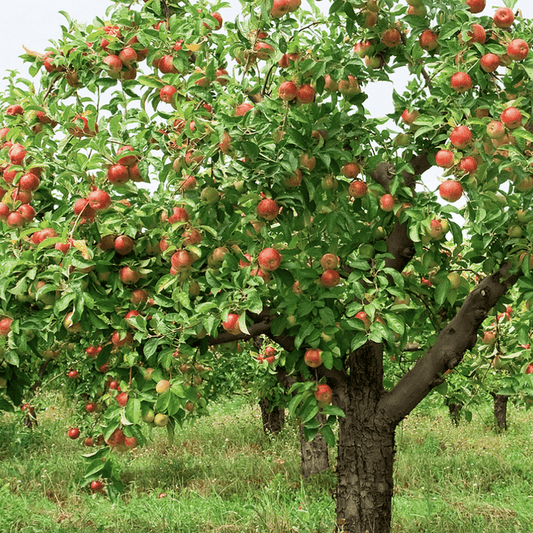
As a non-gardener, I found my whole experience brilliant. Great information & advice available on the website, great range of products & prices are brilliant.
John-Paul
| 22 May

Wonderful plants and great customer service... really surprised to find that the plants are better than those you would get at your local garden centre.
Gavin Wilcock
| 8 Nov
Fighting plastic waste
Delivering fresh from the nursery
Supporting UK growers


